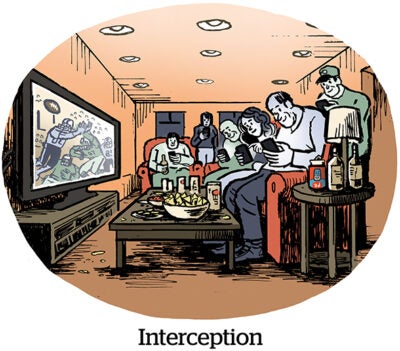Attention metrics are – ahem – receiving a lot of attention these days.
It’s all part of an industry-wide push for measurement tools that go beyond recording a person viewing an ad, and instead focus on whether they had an opportunity to absorb its messaging.
Of course, accurately measuring whether each individual person in a campaign’s target audience actually saw an ad and absorbed it would be impossible. So what does it really mean to measure attention in an advertising context?
How attention is measured
Rather than looking at one particular data signal, attention metrics include a variety of data points, which are fed into a machine-learning model to predict the likelihood that a given media environment and ad creative will draw attention from a hypothetical audience member.
Most attention measurement solutions start with eye tracking. Typically, a tech company will set up a panel or lab test with an opted-in group of participants that consent to engage with digital content – including a publisher’s owned and operated properties and an advertiser’s creative – while eye-tracking cameras trace the path of their gaze around the screen.
For example, users might be tasked with looking at a publisher website that has ads placed around the page. Eye-tracking technology would follow what parts of the page they look at and for how long, including the parts of the page that contain ad placements. Or, users might play a publisher’s video game, and the eye-tracking tech would keep track of where their eyes are focused as they play the game and encounter in-game ad placements.
Eye-tracking studies often involve surveys to gauge ad recall and the likelihood that a person will complete a transaction after seeing an ad.
The data gathered from the eye-tracking study is fed into a machine-learning model so it can learn to predict what types of media content and campaign creative will resonate with people like the ones who participated in the study. Because these studies are meant to gauge how people would pay attention to content and ads as they would actually encounter them, these studies replicate real websites, virtual environments like video games and augmented reality experiences and real-world, out-of-home environments.
Proxy signals that can be gathered through pixels on the page, like viewability, time in view, dwell time, contextual alignment, cursor hover time, scroll depth, click-through rate and audio volume levels can then be layered on top of the eye-tracking data to make the predictive model even more intelligent.
JavaScript tags programmed into the campaign creative can fire a pixel back to the ad server when the creative appears onscreen, said Yan Liu, CEO of TVision. The pixel can contain a number of relevant metrics, ranging from the amount of time a video ad was allowed to play to whether the viewer raised or lowered the volume and more.
Because of its focus on data like eye-tracking studies, which is then overlaid with more readily available proxy signals (think scroll time and contextual alignment and time in view), attention is a predictive metric.
“We’re looking to measure the opportunity for your ad to be seen and resonate with someone,” said Ed McElvain, director of digital platforms and data-driven media buying at Mediahub.
Attention and propensity
Attention metrics can convey whether an ad captures attention and how the surrounding media environment contributes to people paying attention to the ad.
“It’s media’s job to create an opportunity for attention, and it’s creative’s job to hold that attention,” said Marc Guldimann, founder and CEO of Adelaide, which offers an attention metric to marketers for campaign optimization.
Attention metrics also attempt to quantify how likely it is that attention paid to an ad will drive subsequent outcomes, Guldimann said.
Because an attention metric captures a consumer’s interest at a given point in time, it is a valuable signal for propensity marketing, or determining which consumers are most likely to take an action, said Rob Hall, CEO of Playground XYZ, another attention metrics company.
When ad agencies feed attention metrics into their channel-planning tools, they can make decisions on how to direct ad spend based on how much attention ad placements draw.
Attention metrics can help advertisers understand the relationship between ads and outcomes, like how much attention an ad needs to drive outcomes, said Luke Lambert, chief activation officer at Omnicom Media Group-owned agency OMD. For example, maybe a brand needs a long-form ad delivered in a context that commands the total attention of an entire household to encourage a particular outcome, he said.
Early channel-planning tests are beginning to bear fruit for outcome-driven marketers.
“If you look at the correlation to business outcome and KPI performance of viewability or video completion rate, they’re just not as strongly correlated as attention is,” McElvain said.
In some cases, attention is a better indicator of someone’s propensity to convert than viewability by orders of magnitude.
“When we use attention metrics for targeting purposes, they’re three times better at predicting outcomes than viewability,” said Michael Shaughnessy, COO at Kargo.
Attention metrics vs. viewability
Attention is often positioned as an evolution beyond viewability measurement, which simply considers whether an ad was visible to the audience. But viewability is unlikely to disappear completely, because it is a valuable proxy signal for measuring attention.
Because ad placements with high viewability are now requirements for most marketers, the metric is subject to being gamed by “sketchier publishers,” Guldimann said. “The best way to get viewable ads is to have them all jammed up together at the top of the page, or to have media players that shrink and move around the page as you scroll. Viewability has been very easy to game, and in order for a currency to be effective, it needs to be trustworthy.”
And the industry is well aware by now that just because an ad is viewable doesn’t mean anyone looked at it.
Novelty also drives attention. As publishers have zeroed in on ad placements that will guarantee high viewability scores, audiences have become used to seeing ads in those places, and, therefore, they’ve gotten better at ignoring them.
“We’re realizing that people aren’t really seeing the ads that are right in front of them,” said Michael Piner, EVP of advanced media at Mediahub. “That’s why the correlation to propensity we’re seeing from metrics like time in view and video completion rate doesn’t go far enough, whereas attention does.”
Attention metrics can combat banner blindness by finding new places for marketers to focus when tried-and-true placements are ignored.
The metrics could also “provide a currency layer,” said Cary Tilds, chief strategy and operations officer at Frameplay.
But can attention become a new currency to replace viewability?
Many in the ad industry hope attention metrics replace viewability. But first, attention metrics must be standardized and more widely adopted, TVision’s Liu said. “Attention, at least right now, should be used for optimization and measurement and to understand campaign performance, not as a currency,” he said.
Next steps for attention
Attention metrics have only really started to pick up steam in the past few years.
But attention validates spending in newer or less measurable channels. Already adopted across popular channels like CTV and social media, attention metrics are also gaining traction for in-game ads, digital out-of-home and even audio formats.
While the Media Rating Council (MRC) has adopted a standard definition for viewability and accredits vendors on their ability to do that measurement accurately, attention hasn’t hit that level of verification yet.
“It’s very early days, and there is no industry body that has a formal, agreed-upon standard for how attention is measured,” Tilds said. “But I’ve heard rumblings that a standard is coming within the next year.”
As attention measurement becomes standardized, marketers will gain a consistent way to measure the length of time an ad was seen across different platforms and media types. Such a change would be a major development for those who want to see attention become a viable alternate currency.





















